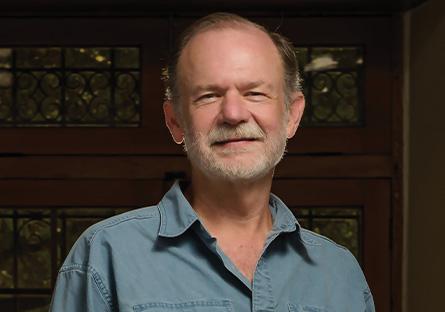This article appears for archival purposes. Any events, programs and/or initiatives mentioned may no longer be applicable.

“The secret to productivity in so many fields – and in origami – is letting dead people do your work for you.”
Robert Lang, a former physicist at NASA, has made a career out of this pithy yet powerful approach.
He means that we can often solve modern challenges by looking through the old and unexpected. Solving problems in one field by searching for established solutions in another is not a radical idea. Birds and those who study them, for example, have done an inordinate amount of heavy lifting for many industries, influencing how designers and engineers construct everything from fighter jets and bullet trains to drones and football helmets. By searching in unexpected places and unlikely fields, we can discover surprising solutions to modern challenges.
Origami experienced a renaissance in the 1990s when studies in geometry, mathematics, and computer science combined to open up a new realm of possibilities for the ancient art of folding. Suddenly, the laws of the esoteric Japanese art became clearly defined by shape and formula, and an explosion of new, complex designs followed. These aren’t the swans you folded in elementary school. A snake with a thousand scales. Many-legged insects with horns and pincers. Elk with antlers and hooves. Whole bands of guitarists and bassists. All from a single sheet of uncut paper.
Surely a single sheet, folded over and over, couldn’t produce an elaborate three-dimensional cuckoo clock? But unfold any of these marvels, and you’ll discover the spiderweb of creases that are their blueprint. And those intersecting lines and shapes? Governed by math and geometry. Lang pioneered software that allows users to draw a stick-figure outline of whatever origami shape they imagined and reverse engineer that into the fold lines one would use to go from flat paper to 3D sculpture.
Science applied to inspire an artistic revolution.
Then, Lang took this idea in the opposite direction. Could origami help solve some of the pressing scientific problems of the day? From the macroscopic view of outer space to the microscopic world inside our bodies, modern humans face a new, exciting challenge: to move big things in small packages.
Equipment like telescope lenses, solar arrays, and solar sails are expansive and complicated devices that must be transported out of the atmosphere onboard shuttles where every inch of space comes at a premium. The solution? Fold them for the journey and unfold them at the destination. The method? Origami, of course. Lang has consulted with space agencies worldwide, lending his expertise to these sorts of challenges.
Then there’s our internal space. Lang demonstrates this idea with a heart stent developed at Oxford. Folded down into a traditional origami design, the stent becomes small enough to pass through the body and unfold into its full size at its destination, keeping an artery open and potentially saving a life.
What problems will origami solve next? Join Lang at Scottsdale Community College on Wednesday, November 15, to find out.
This two-part series will show how folded art allows us to solve real-world practical problems
in the fields of science, engineering, technology, medicine, and more. Part 1 begins at 1:30 p.m. as Lang dissects the science of art. In Part 2, at 3:30 p.m., Lang leads a class in origami folding so you can discover its power for yourself!
The class is free and open to the public, but space is limited, so reserve your spot today! The class is located in the Science Lecture Building, Room 116. Refreshments and door prizes will be available.
For more information, contact Patricia Dueck at patricia.dueck@scottsdalecc.edu.
Learn more about SCC’s STEM degree and certificate programs.
Learn more about SCC’s Visual and Performing Arts degree and certificate programs.